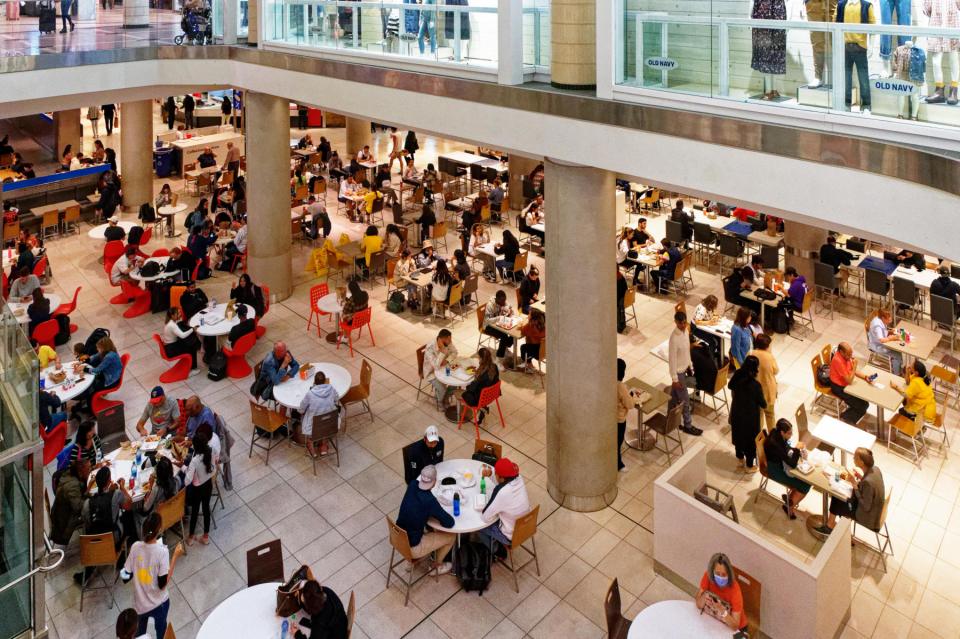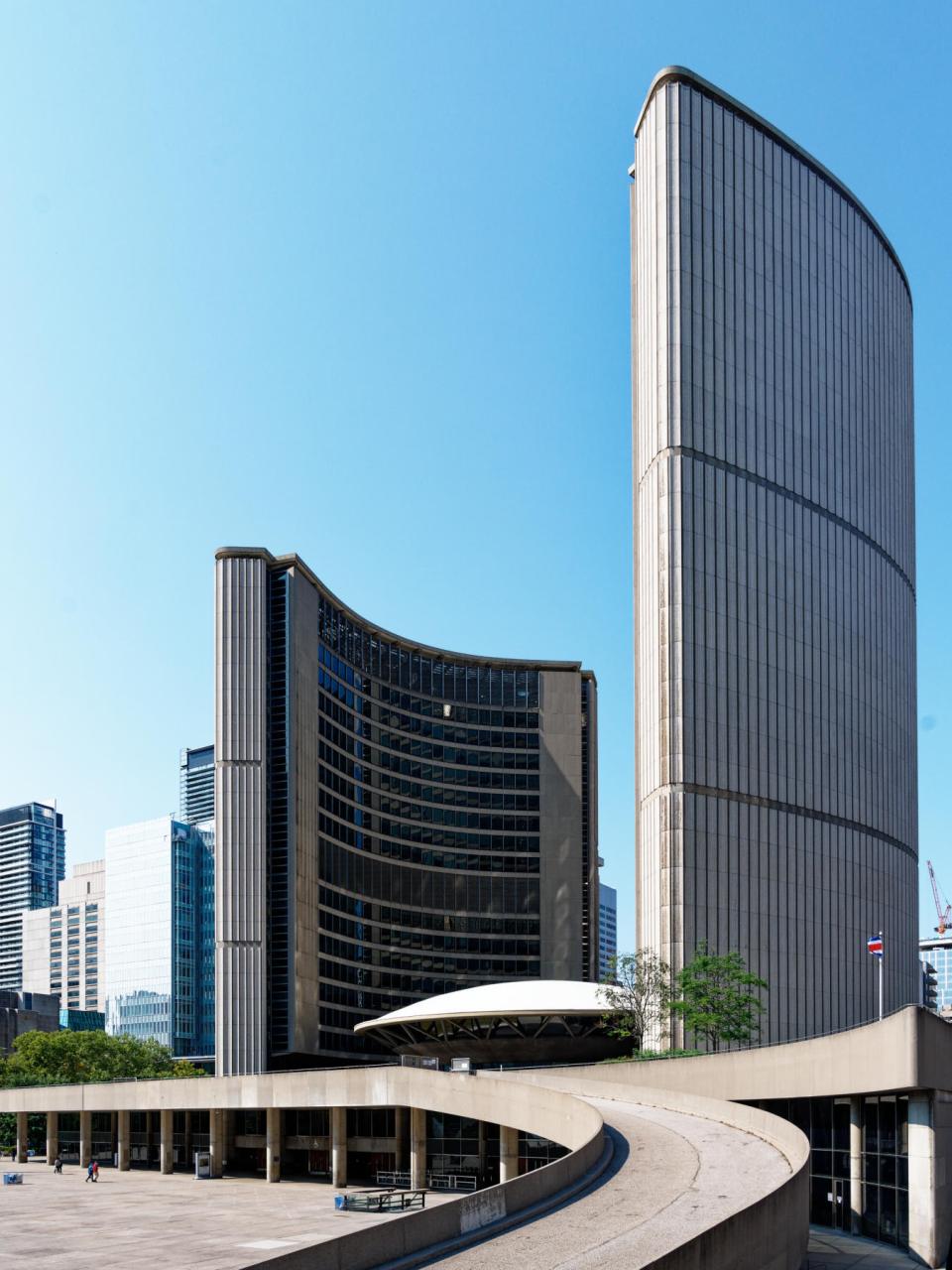Thursday 15 September 2022 – In my last post I said I would tell you about our exploration of something that I’d vaguely heard about Toronto. And I will. I promise.
First, however, we had to attempt a photo of the building next to our hotel – the Royal Bank Plaza, which has gold-plated windows. No, really. Unsurprisingly, there are many photos of this building online, such as this one, But no; we had to have our own. So, it being a lovely sunny day, and after consultation with the Photographers Ephemeris to check sunshine angles, we hastened out to Bay Street. This was the result (after a lot of processing to correct converging verticals):

Once again, this (which I think is not bad) was achieved with my mobile phone, as my Nikon’s lens couldn’t capture the whole building in one gestalt. I could have gone back to the hotel room to fetch my wide-angle lens but (a) the sun would have been wrong by the time I got back and (b) we had urgent business – the day’s project – to attend to.
So, what do you do when walking about Toronto on a beautiful sunny day? Of course – you go underground. This is what I’ve been mysteriously referring to heretofore.
Underground……
As you walk around Toronto, you see a lot of grilles in the sidewalks pavements: some small;

and some much larger.

Occasionally, you catch warm air coming out of them, or spot lights of various colours underneath. This all started to make sense when Sandro, our guide from yesterday, mentioned “the Underground City” – a way of getting between buildings comfortably despite the -30 or -40°C temperatures regularly experienced here in winter. It’s called PATH, a series of underground tunnels linking building basements and, as we discovered, it’s A Thing – really, Quite. A. Thing – the largest underground shopping complex in the world. 29 kilometres of underground walkways connecting over 70 buildings and incorporating everything that citizens need without them having to go above ground – shops, eateries, medical facilities – as well as the basic businesses it connects (each of whom – banks, department stores etc, is responsible for their own basements, as it were).
It started in 1900, when the Eaton’s department store constructed a tunnel underneath James Street, allowing shoppers to walk between the Eaton’s main store at Yonge and Queen streets and the Eaton’s Annex located behind the (then) City Hall. It expanded under city planner Matthew Lawson – clearly a man of vision – in the 1960s. Toronto’s downtown sidewalks were overcrowded, and new office towers were removing the much-needed small businesses from the streets. Lawson convinced several important developers to construct underground malls, pledging that they would eventually be linked. What a salesman he must have been.
Anyway, this was something we simply had to explore.
You can get to PATH from our hotel, which we did (actualy the second tunnel ever created as part of what then became PATH); and then immediately got lost, since we had no clues as to compass or street directions. We (Jane) eventually sorted it out, with some assistance from a nice young man wearing a Security uniform and ad hoc access to the internet courtesy of passing WiFi hotspots.
It’s extraordinary.
Having got underground to Union Station’s Great Hall

we plunged into the underworld

and blundered about whilst we sorted ourselves out. From there, we wandered this network of shops,


corridors,





and hallways.




 (this last, showing a host of ATMs in a pretty much deserted hallway, reminds me that this was quiet because the sun was shining; during the winter, I bet it’s much busier.)
(this last, showing a host of ATMs in a pretty much deserted hallway, reminds me that this was quiet because the sun was shining; during the winter, I bet it’s much busier.)
It’s quite interesting to note, as you move from the domain of one building to the next, that the colours and other look-and-feel cues change at the “border”.

There are massive food halls,

dental and medical facilities, including this pop-up Covid vaccination centre,

special messages among the digital advertising billboards,

fleeting glimpses of the outside world,


and occasional insights into the phenomenal amount of work that went into creating PATH and which needs to go into maintaining it.


After covering a couple of miles of this, we eventually emerged, blinking, into
….Overground….
the upper domain of street level.

We were near the Old City Hall

and its modern replacement,

the setting of which gave plenty of scope for more photographic angles.



We were on Bay Street, which effectively leads back to our hotel, so we walked towards it, and, on the left, spotted another Architectural Thing – Brookfield Place, which is a sufficiently massive building that you can hardly comprehend it from the street, but which houses a lovely atrium, the Allen Lambert Galleria.



The Overground part of the day finished with a visit to one of Toronto’s defining landmarks, the CN Tower, for dinner. It’s about a 10-minute walk from our hotel, and we used our (Jane’s) new-found confidence in navigating PATH to get there without going outdoors – via the Skyway.

As we arrived, we had to pause for the obligatory ridiculous picture up this 553-metre tower, once the tallest free-standing building in the world until the Burj Khalifa in Dubai sprang up.

There’s a security check and an efficient queuing system, which favours People Like Us (i.e. with restaurant reservations – you can just pay to go up to gawk if you want) and then you’re whisked up to the revolving restaurant in just about a minute, in an elevator with a glass door and a (rather scuffed) glass floor.

We had a nice dinner, with courteous service from our waiter, Juan, and (because they didn’t give us window seats) I made a bit of a nuisance of myself squeezing past tables to take photos of the views of the city and the islands as we slowly revolved past them.


(The Rogers Arena had its roof open today)


Whilst we were eating, the sun set and, after dinner, we went down a level to the observation deck, where hoi polloi had been gawping at the view and taking selfies, to look at the city by night,



and also to mark the forty three years since Jane’s last visit. This is her original photo.


Note that the landmark in her photo, the white Bank of Montreal building, has rather more surrounding masonry now than it used to. (We do have a night time shot, but it hardly makes any sense, hence not included here.)
We then joined the 10-minute queue for the elevators back down to ground level and headed back to the hotel for a final drink in the…
….Wobbling Free
Library Bar, which is a very classy place in which to have a martini.

And that was it for the day. And for Toronto, really, since tomorrow we leave for Ottawa after an absorbing, varied and enjoyable three days here. If all goes well, we’ll take the train and have an entirely unremarkable day, in which case I’ll be back to report on Ottawa in a couple of days’ time. I hope you’ll join me then as we continue our eastward journey.






















































































